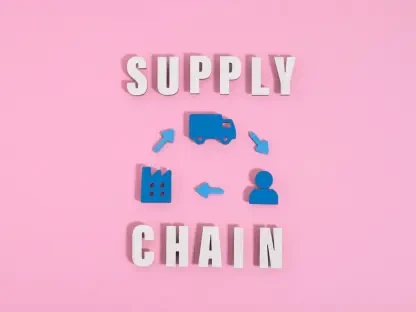Today, we’re thrilled to sit down with Zainab Hussain, a seasoned e-commerce strategist with a deep background in customer engagement and operations management. With years of experience helping small and midsize businesses (SMBs) navigate the complexities of competitive markets, Zainab offers invaluable insights into staying ahead in an ever-changing landscape. In this interview, we explore how SMBs can build resilience through strategic planning, diversify their offerings, scale operations effectively, retain loyal customers, maintain competitive pricing, and expand their reach through innovative channels. Let’s dive into her expert perspective on what it takes to thrive.
How can SMBs build a strategy to handle sudden market shifts without losing their footing?
I think the key for SMBs is to embrace flexibility from the get-go. Markets can change overnight—whether it’s a shift in customer behavior or a supply chain hiccup—and businesses that aren’t ready to pivot often struggle. Start by keeping a close eye on trends and customer feedback, so you’re not caught off guard. It’s also smart to have a financial buffer or access to quick funding options to weather disruptions. Most importantly, build a culture where your team is ready to adapt, whether that means tweaking your marketing approach or rethinking your product lineup. Preparation isn’t about predicting the future; it’s about being ready to respond.
What’s the biggest risk for a small business that sticks to a single product or service, and how can they avoid it?
The biggest risk is vulnerability. If demand for that one offering drops—say, due to a new competitor or changing tastes—your revenue takes a direct hit, and recovery can be tough. Diversifying is the best way to avoid this trap. It doesn’t mean overhauling your business overnight but starting small by identifying related products or services your customers might need. For instance, if you’re a bakery, maybe add coffee or catering services. Look at what’s selling in your market and test new ideas with minimal investment to see what sticks. Spreading out your revenue streams builds a safety net.
When scaling operations, what challenges do SMBs typically face, and how can they overcome them?
Scaling is exciting but tricky. One common challenge is cash flow strain—upgrading equipment or hiring staff costs money, and if sales don’t ramp up quickly, you’re in a bind. Another issue is maintaining quality; rapid growth can stretch your team thin and hurt customer satisfaction. To overcome these, plan growth in phases. Don’t expand everything at once—focus on one area, like improving delivery times, before tackling another. Also, look into financing tools like equipment loans to spread out costs. Finally, keep communication tight within your team to ensure everyone’s aligned as you grow.
Why is holding onto existing customers just as critical as attracting new ones for a small business?
Existing customers are your backbone. They provide steady revenue, often spend more over time, and are cheaper to keep than new ones are to acquire. Beyond that, loyal customers spread the word—whether through reviews or referrals—which brings in new business without extra marketing costs. Losing them to a competitor can hurt not just your bottom line but your reputation. Prioritizing retention means you’re building a stable foundation that can carry you through lean times when new customer acquisition slows down.
How can SMBs set prices that keep them competitive without sacrificing profitability?
Pricing is a balancing act. Start by understanding your costs—everything from materials to overhead—so you know your baseline. Then, research what similar businesses charge and what customers are willing to pay. It’s not just about being the cheapest; it’s about showing value. If your price is higher, make sure the quality or service justifies it. Regularly check in on market trends and adjust if needed, but avoid knee-jerk cuts that eat into your margins. Transparency with customers about why your price is what it is can also build trust.
What are the benefits of exploring new ways to sell, and how can a business get started with that?
Sticking to one sales channel—like just a physical store—limits your reach and makes you vulnerable if that channel faces disruption. Adding new methods, like an online store or partnering with a distributor, opens up new customer segments and boosts visibility. It also lets you meet customers where they are, whether they prefer shopping online or through a third party. To get started, research which channels align with your audience. If it’s e-commerce, set up a simple website and test the waters with a small product range. Start small, learn from the data, and scale up as you see results.
What’s your forecast for how SMBs will need to adapt to stay competitive in the coming years?
I believe the next few years will push SMBs to lean even harder into technology and data. Customers are expecting more personalized experiences, faster service, and seamless interactions across multiple platforms. Businesses that invest in tools to understand customer behavior and streamline operations—like analytics or automation—will have a real edge. At the same time, sustainability and transparency will become non-negotiable as consumers prioritize ethical brands. SMBs will need to stay nimble, keep learning, and build genuine connections with their audience to stand out in crowded markets.









